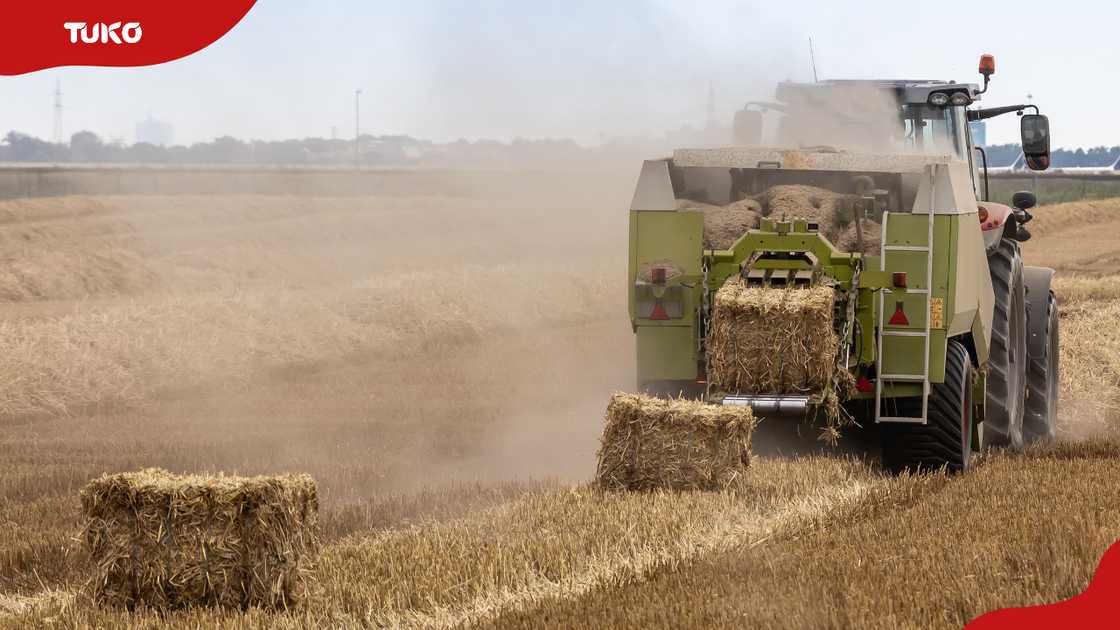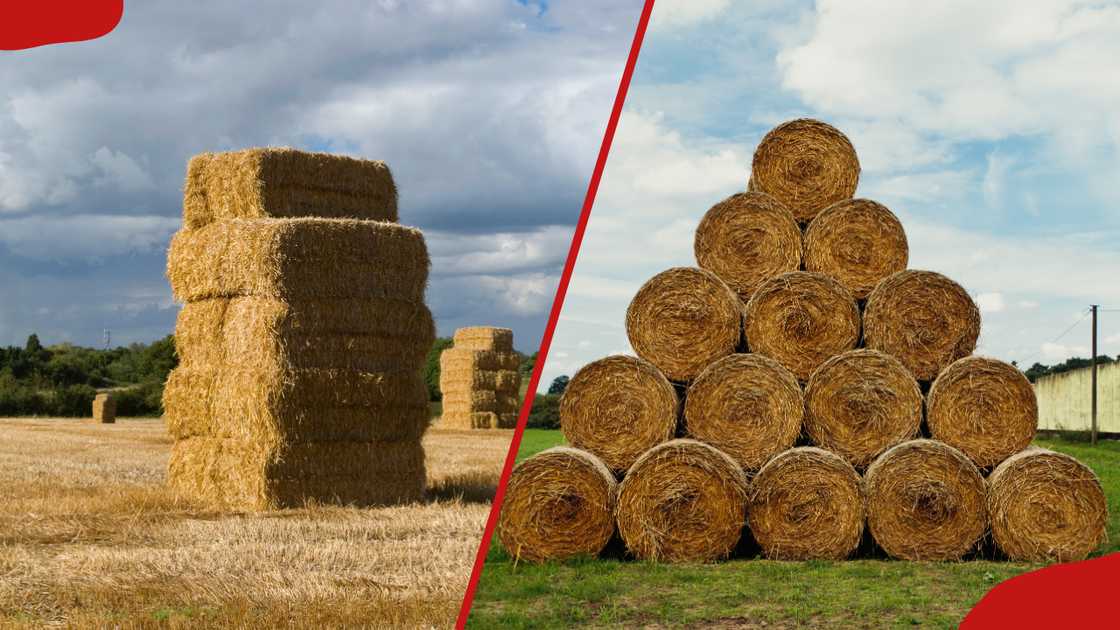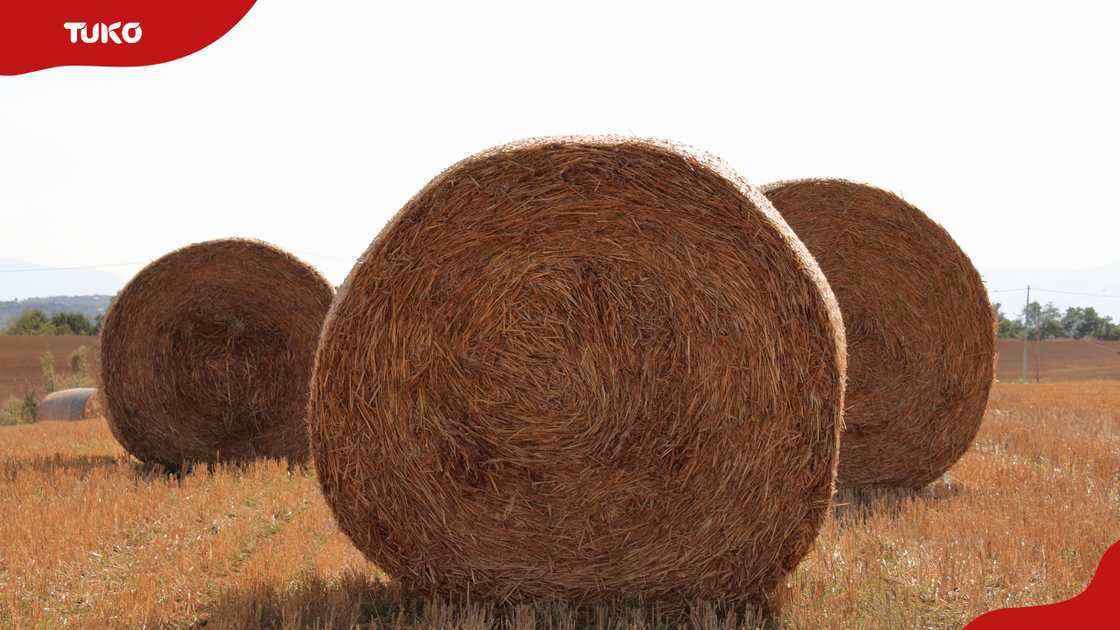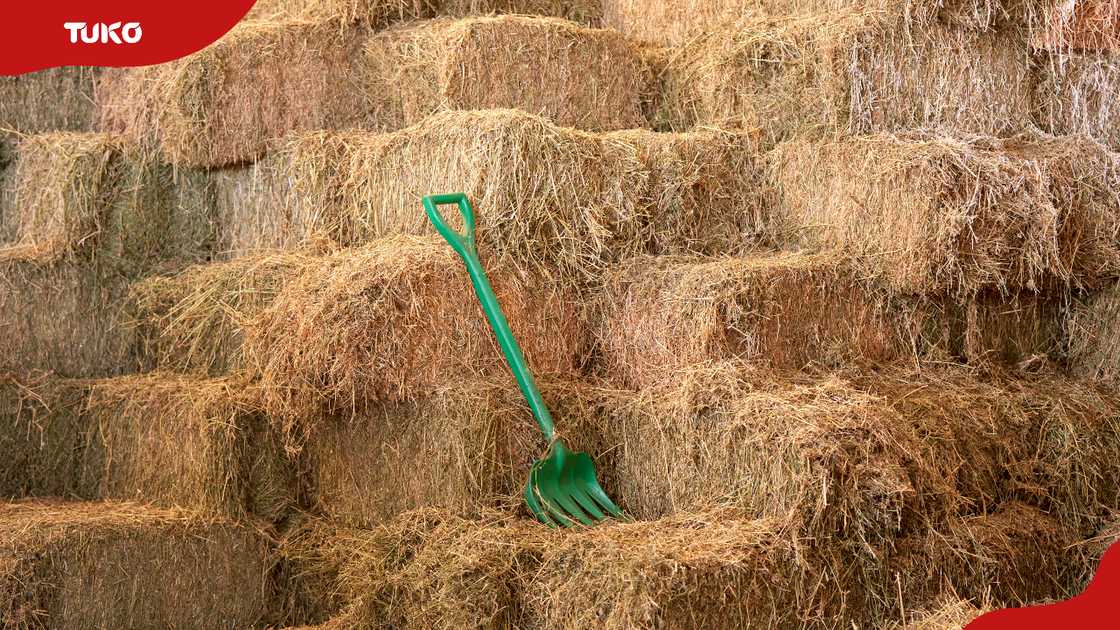Hay plays a crucial role as animal fodder globally, particularly within the dairy industry. As a hay producer gearing up for harvest, you might be pondering the anticipated output. Therefore, what factors should you take into account? Moreover, how many bales of hay can you reasonably anticipate from each acre?

If you're considering getting into hay farming but are uncertain whether it will be profitable, start with thorough research to make sure you see a good return on investment. Factors like soil quality, choice of grass species, climate conditions, and cultivation methods play crucial roles. However, beyond these elements, what additional aspects should you ponder to optimize your hay production?
What is the typical number of hay bales produced per acre?
As stated by Graduate Farmer, in Kenya, the output of hay farming yields between 200 to 300 bales per acre per harvest. Nevertheless, this number fluctuates based on various elements including the species of grass used, soil quality, and climatic circumstances.
In a worst-case scenario, where conditions are less than ideal, the hay yield per acre can drop significantly. Poor soil fertility, drought, and suboptimal grass varieties can lower productivity. In such cases, you should harvest around 100 to 150 bales per acre per cutting (in Kenya).
Are all hay bale sizes the same?

Hay bales come in various sizes and differ according to country or region. For example, Smart Farmer Kenya states that the standard conventional two-string hay bale should measure 90 cm x 45 cm x 35 cm and weigh a minimum of 15 kilograms (18–22 kgs optimal conditions).
Internationally, the size of hay bales varies. Per Measuring Know-How, the most common hay bale dimensions (average) are:
- Small hay bales: Start at 18 × 35 × 14 inches (46 × 89 × 36 centimetres) and weigh about 50 pounds (23 kilograms).
- Large hay bales (generally round): Measure 5 feet wide by 6 feet in height (1.5 × 1.8 meters), with a weight of approximately 1,500 pounds (680 kilograms).
What is the number of small square bales produced per acre?
In Kenya, the typical output for small square bales of Boma Rhodes grass is approximately 200 to 275 bales, with each bale weighing about 15 kilograms, per acre of land. On an international scale, the production ranges from 70 to 150 bales per acre, where each bale weighs either 50 pounds or roughly 22.6 kilograms, typically for Orchard grass.
What is the number of round bales produced per acre?

Large round bales are larger and frequently favored for extensive farming activities. Generally, you might produce between 2 and 4 round bales per acre under optimal growing circumstances with a robust crop of hay.
When operating with a typical 4x4 round baler, you might see a somewhat greater output. However, employing larger 5x5 round balers could lead to producing fewer bales per acre because of their bigger dimensions.
What is the number of 5x5 round bales produced per acre?
Based on the hay’s density and moisture level, a typical 5x5 round bale usually ranges from 800 to 1,200 pounds. Given their substantial size, you might find approximately 1.5 to 2.5 bales produced per acre.
Should you aim for maximum yield, make sure to cut at the right time and prevent overdrying, since too much moisture loss can reduce the bale’s compactness.
What is the number of hay bales produced per acre?
Another common phrase for round bales is "rolls of hay." The anticipated output can vary based on the bale dimensions. With typical 4x5 bales, you could potentially get 2 to 3 rolls per acre.
What is the output of hay production per acre?

The three primary sizes of hay bales include large round bales which typically produce around five bales per acre. In contrast, large square bales can generate roughly 40 bales per acre. Smaller square bales result in yields ranging from 100 to 300 bales per acre.
How many bales of hay are there per acre in Kenya?
In Kenya, hay farmers can yield between 200 and 300 bales per acre, depending on the type of grass, soil quality, and farming practices.
What is the typical number of bales per acre?
Regarding Boma Rhodes grass in Kenya, you usually anticipate producing approximately 200 to 300 standard-sized hay bales per acre, with each bale weighing roughly 15 kilograms. Conversely, in countries such as the United States, Canada, Australia, Spain, and Italy, alfalfa hay from legume plants may generate up to 120 bales per acre, whereas orchard grass generally produces anywhere from 20 to 60 bales per acre.
What method do you use for calculating bales per acre?
To determine the number of bales per acre, you may utilize the subsequent formula provided by Build Wise Calculator:
The number of bales can be calculated using this formula: Number of bales = Field size (acres) × Yield per acre (tons) × 1000 / Bale weight (kilograms).
Here's a step-by-step explanation:
- Field size (acres): The overall size of the area where you're cutting hay.
- Yield per acre (tonnes) The overall quantity of hay generated per acre, calculated in metric tons. Note that one metric ton is equivalent to 1000 kilograms.
- Bale weight (Kilograms): In this scenario, every bale weighs 15 kilograms.
If you have a field size of 1 acre with a yield of 2 tonnes (or 2000 kilograms) per acre, the computation would look like this:
The number of bales equals 1 × 2 × 1000 / 15 ≈ 133 bales per acre.
Based on the scenario provided, you would yield roughly 133 bales per acre, with each bale weighing around 15 kilograms.
What is the profit potential for hay farming in Kenya?

Kenyan hay farming has the potential for substantial profits, as many farmers have successfully generated significant earnings from this activity. Several factors may influence the financial success of these operations, such as the expense associated with acquiring capital, costs related to storing the harvested product, and market prices for hay.
What type of grass is most commonly used for hay production in Kenya?
In Kenya, the Boma Rhodes grass is predominantly utilized for making hay due to its high productivity, excellent nutrient content, and resilience during dry periods. Additionally, Napier grass, also referred to as elephant grass, is widely favored because of its rapid development and capability to thrive under different environmental settings.
Lucerne (alfalfa) stands as the most frequently utilized legume for producing hay. Due to its substantial protein levels and high digestibility, Lucerne hay is particularly well-suited for nourishing dairy cows, horses, and various types of farm animals.
Final word
Now you know how many bales of hay per acre you can yield. For the best outcome, it's essential to harvest at the right time, keep the soil healthy, dry the hay properly, and maintain your equipment. Keeping an eye on the weather and preparing the fields well can also make a big difference.
Are you looking for more information about the best agriculture courses in Kenya? Blog.Diwida.co.ke published an informative article listing the various branches of agriculture you can study in Kenya.
Agriculture is a very marketable course in Kenya, with numerous institutions offering it at different levels. There are many options, whether you are interested in dairy technology, sustainable agriculture, or agribusiness management. Read the article for more information.